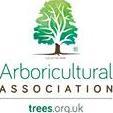
Article by John Parker, Chair, London Tree Officers Association
All of us in the arboricultural industry are aware of the ecosystem services delivered by the urban forest. The environmental, economic and social benefits enjoyed by all of those who live, work and play near trees.
Yet we must also acknowledge the disadvantages, real and perceived, which can be brought about as a result of trees. As the typical first point of contact between the public and the arboricultural industry, tree officers know better than most some of the traditional complaints. Blocked light, interrupted TV reception, falling leaves and fruit, funny smells, disagreements with pigeons; the list goes on.
One problem associated with street trees has received a lot of recent coverage: the conflict between tree roots and the footway, and the different ways of managing this conflict. This is an extremely common issue and one which we all know too well. It goes without saying that it is essential that pedestrians and other road users are able to travel safely. Particular consideration should be given to those with mobility difficulties or the partially sighted. As with anything in life, the advantages and disadvantages have to be weighed up carefully before taking action, and there is usually more than one solution to a problem.
Conflicts between tree roots and pavements usually have their origin right at the beginning, at the time of planting.
As far as is reasonably practicable the pit – including the pit surface – should be designed to maximise the chances of establishment and minimise the risk of future problems. It should be obvious that planting specifications for street trees should be determined by an appropriately qualified and experienced tree specialist, usually the relevant tree officer. Right place, right tree, right expert.
Mature trees and footways
When planting new trees we are in the fortunate position of being able to try to avoid the mistakes of the past. However, this is obviously not an option when dealing with existing trees, some of which were planted decades or centuries ago.
How do we deal with those semi-mature and mature trees which are causing problems to our footways? What is the solution to the conflict? The most straightforward answer would be to cut all of the trees down. No tree, no issue. But that would, of course, be short-sighted in the extreme, and nothing more than environmental and cultural vandalism.
Removing a mature tree and replacing it with a single sapling is not really replacing it at all. We know that some of the key ecosystem services delivered by trees – such as air quality and urban cooling, to name but two – are positively correlated to canopy size. This is why there has been such an emphasis on increasing canopy cover in recent years. To fully ‘replace’ the canopy volume of a mature tree in the short term would likely require the planting of hundreds of trees in the vicinity of the original – an impossibility in an urban environment with all of the challenges and restrictions on space that we have to contend with. Canopy targets will not be met by tree planting alone; retention of existing trees is just as important.
In addition to the environmental, social and economic considerations we also have to factor in the political costs of tree removal. It can be a blessing and a curse to tree officers that certain sections of their communities are so passionate about trees!
The urban forest comes with a cost, but so does its absence. Any perceived saving on avoiding footway maintenance or pruning is surely wiped out by the additional costs associated with stormwater management, air conditioning, healthcare, crime, traffic accidents and so on.
Problem solving
It is worth remembering that there are several systems for calculating a monetary value for trees, such as the CAVAT method developed by the London Tree Officers Association. When repeated over a number of years this can show the depreciating value of a tree which has been over-pruned or damaged in some way. Conversely, CAVAT can demonstrate the fact that as the tree grows, so does its value. Replacing a mature tree with a sapling does not just negatively impact ecosystem services, it reduces asset value. Assigning a monetary value to a tree can also be used in cost comparison; the engineering solution or new surface material required to retain the tree might cost £25k and be deemed too expensive, but if the tree at risk of removal is regarded as an asset worth £100k then the engineering work starts to look like a bargain.
One of the many roles of the tree officer is that of problem solver. Sometimes it may indeed be the case that a tree has to be removed because of damage it has caused to the footway, but those instances are extremely rare and removal should be regarded as an absolute last resort. A wide range of options is available which will allow both the footway and tree to continue to deliver their benefits to the urban environment. Space does not permit a detailed exploration of these options, but a brief summary can be given.
Sometimes simply widening the tree pit is enough; sometimes root manipulation or pruning will resolve the situation. Carefully raising the footway or removing the displaced kerb might be an option in some cases. One of the most common solutions is to replace the damaged footway material with something less likely to cause a problem, perhaps the most obvious choice being to remove lifting slabs and their associated trip hazard and replace them with asphalt. Yes, it will eventually lift and crack and need to be replaced, but this is a small price to pay in exchange for being able to retain a healthy mature street tree.
When it comes to materials immediately around the base of the tree there are many alternatives available. Some of these are explored in the forthcoming LTOA publication Surface materials around trees in hard landscapes. This document analyses some of the advantages and disadvantages of the most commonly used materials, including topsoil, organic mulch, inorganic mulch, self-binding gravel, resin-bound gravel and bound rubber crumb. The conclusion – spoiler alert – is that there is no tree pit panacea. No one material is suitable for all situations.
So – what is the solution to the root versus footway conflict? Depending on the specific problem there will likely be several potential solutions. Removing a healthy tree is rarely one of them. The challenge, as always, is for us as an industry to continue to promote the importance of trees as a key component – the key component – of green infrastructure; to make the argument that trees are an asset as important to the urban environment as lamp columns, drains and flat footways; and to ensure that our urban forest is managed by the right people, equipped with the right resources.
-
 1
1
Report Article














Recommended Comments
Create an account or sign in to comment
You need to be a member in order to leave a comment
Create an account
Sign up for a new account in our community. It's easy!
Register a new accountSign in
Already have an account? Sign in here.
Sign In Now